Air cargo charters offer speed, flexibility, and exclusive use. The biggest benefit is speed: a charter flight goes direct, bypassing hub delays and connections, so freight that might take days via normal routes can arrive in hours. You also get complete flexibility in scheduling – the plane departs on your timetable, not an airline’s. Additionally, the entire aircraft is dedicated to your cargo, which means no co-mingling with other shipments and tighter security/control over handling. Charters can utilize smaller airports closer to your origin or destination, avoiding congestion and reaching remote areas easily. Finally, you can transport specialized cargo (oversized items, dangerous goods, etc.) that scheduled flights might not accept, with the charter operator tailoring the solution to those needs. In short, you gain unmatched speed and customization, albeit at a higher cost, to ensure your shipment arrives exactly when and where it’s needed.
Reaching North America’s most remote destinations – from the Alaskan bush to isolated Canadian communities, Hawaiian islands, and far corners of Mexico – presents unique logistics challenges.
Many such regions lack road or rail links and have limited ports or runways, while extreme weather can cut off access for weeks. In these situations, air cargo charter services act as a lifeline, enabling direct delivery of freight to places that standard shipping or scheduled flights cannot reach. For logistics professionals and shippers, understanding how air charters overcome these hurdles is vital to keeping supply lines open and time-critical cargo on schedule.
WHAT IS AIR CARGO CHARTER?
An air cargo charter is the bespoke hire of an entire aircraft to move freight outside the standard airline schedule. Instead of fitting your shipment into a commercial carrier’s fixed routes and timetables, you secure the whole plane—so the flight path, departure time, and payload are built entirely around your requirements.
Chartering is the go-to solution when cargo is oversized, heavy, or urgently needed and can’t travel through regular air-freight channels. It lets you fly nonstop between the most convenient airports, on the exact timeline your project demands.
Whether it’s a one-of-a-kind machine or a time-critical project load, an air cargo charter ensures your goods reach their destination precisely when—and where—you need them.
TALK TO AN EXPEDITOR NOW
Get a Quote in Minutes for Your Time-Critical Freight Needs
The Logistical Challenges of Remote Destinations
- Remote areas come with formidable logistical challenges. Limited infrastructure is a major hurdle – many communities have no highways or railroads connecting them to the rest of the continent. In northern Canada, for example, the only reliable transport for part of the year might be by air or seasonal ice roads. Similarly, vast stretches of Alaska have no road access; some villages can only receive supplies via small airplanes or boats. In fact, many Alaskan and northern Canadian communities are only accessible by air or sea, especially during winter.
- Harsh weather adds another layer of complexity. In Arctic and sub-Arctic regions, winters are long and severe – blizzards, icing, and extreme cold can ground planes or block trails. Ice formation can close ports and freeze waterways, cutting off barge and ferry routes. Even during milder seasons, fog, heavy rain, or winds can disrupt scheduled services. These weather challenges mean timing is everything; missing a seasonal supply window (such as the end of winter ice roads or the short summer barge season) can delay shipments for months. Air cargo charters offer a way to work around these windows by flying in supplies whenever conditions allow.
- Rugged terrain is also a factor. Mountainous areas, dense forests, or island locations often lack suitable landing facilities. Some remote airstrips are just gravel, dirt, or even ice/snow runways carved out of wilderness. Many are short or unpaved landing strips that large commercial jets cannot use. There are cases in rural Alaska where there isn’t even a proper runway – pilots might land on frozen rivers or beaches to reach a village. Such challenging conditions demand specialized aircraft and skilled crews accustomed to bush flying techniques.
Why Choose Air Cargo Charters for Remote Destinations?
Using an air charter for remote logistics offers clear advantages over standard air freight or surface transport. While charter services often come at a premium, they solve problems that scheduled carriers or ground transport simply can’t address. Here are the key advantages of air cargo charters in overcoming remote delivery challenges:
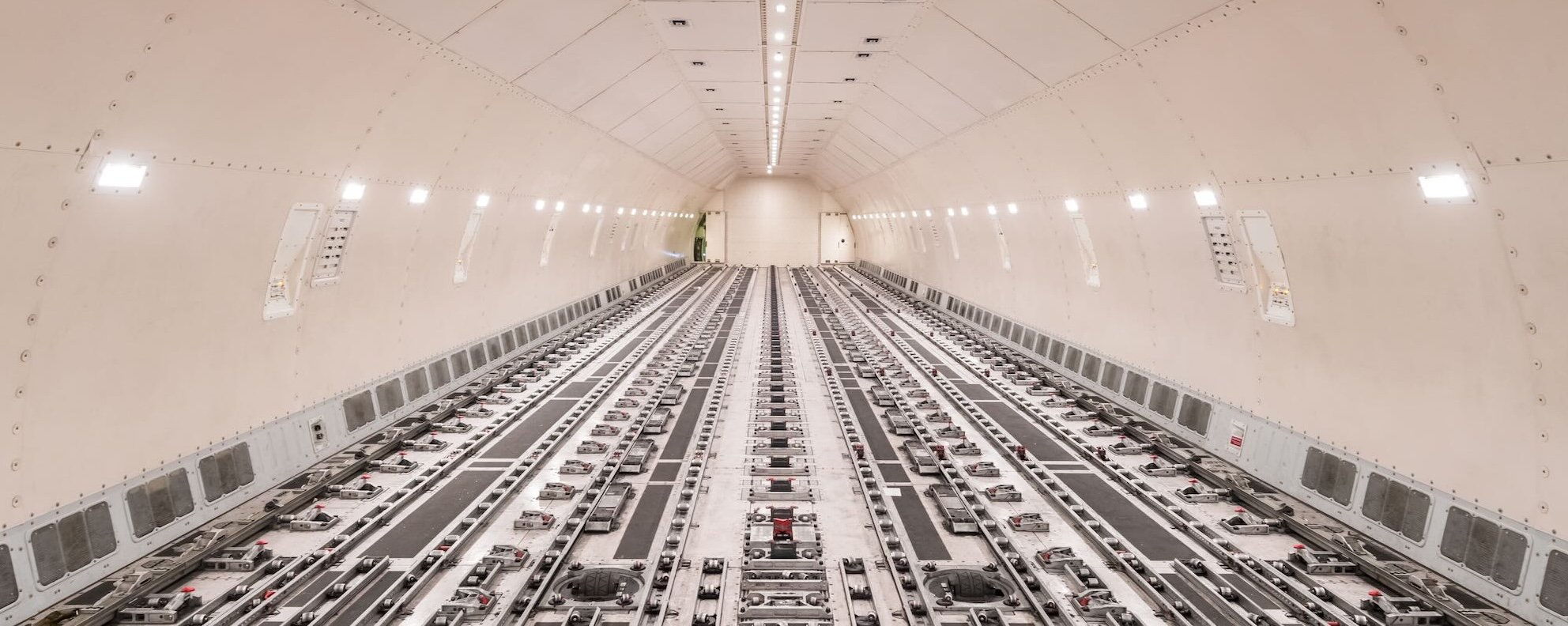
Speed and Urgency
Chartering an aircraft enables fast delivery on extremely short notice. You don’t have to align with infrequent shipping schedules – if cargo is needed immediately, a charter flight can often have it airborne within hours. This speed is critical when, say, a mining operation or factory is down waiting for a part. Same-day or next-day delivery to remote sites is possible with charters, far faster than any truck convoy or boat. In emergencies or disaster relief situations, these “aircraft on demand” act as logistical lifelines, rushing medical supplies or generators into isolated areas.
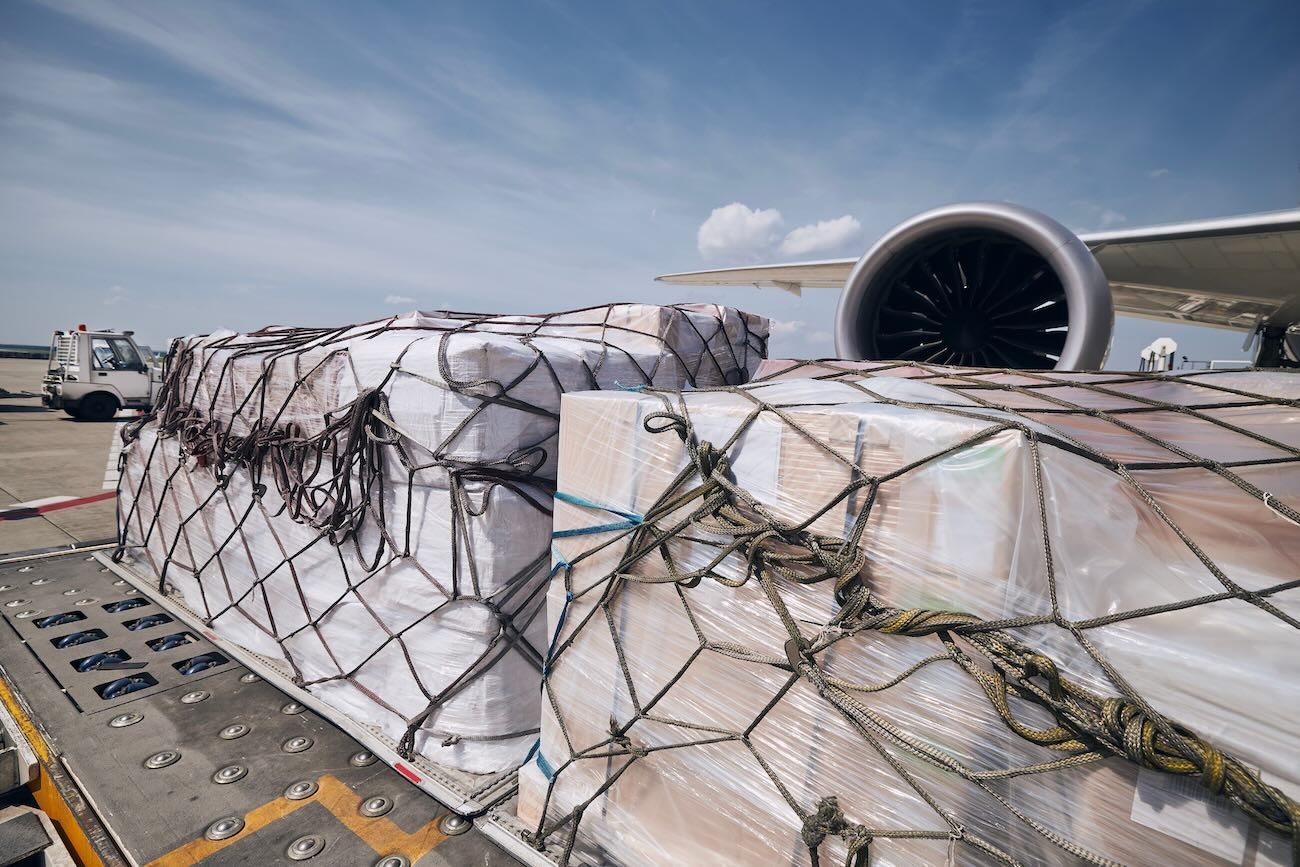
Flexibility in Scheduling
With air charters, shippers aren’t limited by airline timetables or fixed routes. You set the schedule and route – the plane departs at your chosen time, even at odd hours or from out-of-the-way airfields. Charters can fly directly point-to-point, with no layovers or hub transfers. This flexibility is invaluable in remote operations; for example, if you need an urgent uplift from a field site on a Sunday at 3 AM, a charter can be arranged – something no scheduled service or ground mode could accommodate. Fewer handoffs also mean less risk of delay or loss, giving a level of control scheduled freight can’t match.
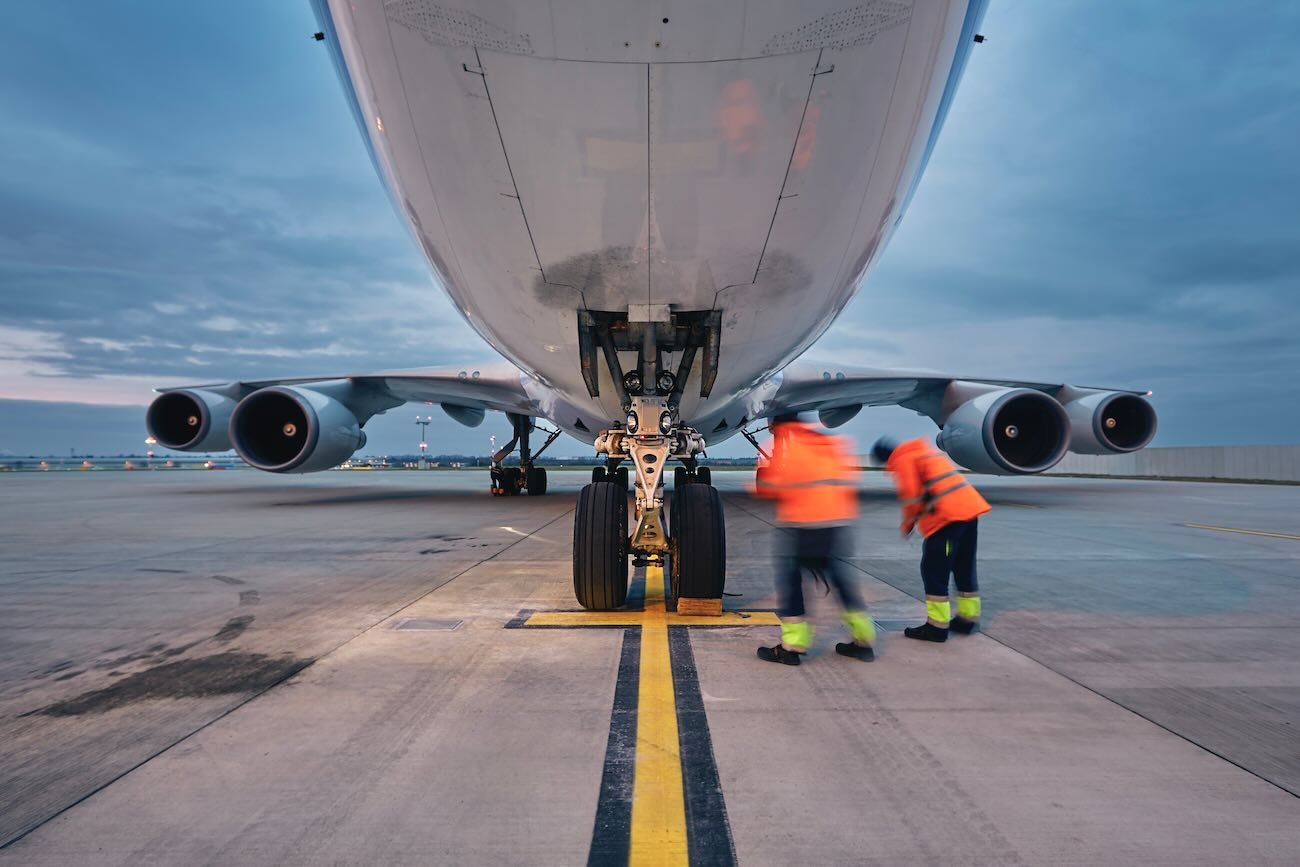
Reach and Access
Air cargo charters can use airports and landing strips that commercial freighters avoid. Need to reach a mining camp with a short gravel strip, a secluded island, or a mountainous village? A charter plane can likely land there when others can’t.
Small turboprops and bush planes are capable of operating from rough, unimproved runways – getting as close as possible to the cargo’s destination. This minimizes the “last mile” problem by delivering straight to the remote area, not just the nearest major airport. The ability to fly into hard-to-reach locations with minimal infrastructure is a game-changer. It means charters can bypass broken roads, washed-out bridges, or distant seaports and bring supplies right to where they’re needed.

Capacity and Customization
When you charter, the entire aircraft is at your disposal, and it’s chosen to fit your cargo’s needs. This is ideal for outsized, heavy, or high-volume loads that might not fit on normal scheduled flights. Whether you need to move a 10-ton generator to a remote oil field or a pallet of critical parts to a small island, the charter broker will source an appropriate aircraft – from compact cargo turboprops to jumbo freighters.
You’re not constrained by the fixed capacity of a scheduled route; if the job requires a larger aircraft (even up to a 747 or similarly large cargo jet), it can be arranged. Conversely, if only a small plane is needed, you’re not paying for unused capacity. This customization ensures cost-effectiveness and the ability to handle unusual cargo. In short, charter = right plane for the job every time.

Reliability and Direct Delivery
Remote charters offer a level of reliability by cutting out multiple transfer points. The cargo goes directly from origin to destination with no interim re-handling, reducing the chance of delays or damage. For instance, a charter can fly nonstop from a manufacturing site in the mainland U.S. straight to a remote Alaskan town, whereas scheduled freight might require multiple hops and handovers.
Fewer touchpoints mean a more secure chain of custody – a key benefit for sensitive or high-value shipments. Additionally, charter providers often have 24/7 operations to launch flights at a moment’s notice, so urgent needs don’t wait until “business hours”.

Planning, Routing, and Regulatory Steps in Remote Charters
- Route Planning and Fuel Stops
- Weather and Seasonal Readiness
- Permits and Regulatory Compliance
- Reduced Handling and Risk
- Regulatory Special Cases
Route Planning and Fuel Stops
Weather and Seasonal Readiness
Permits and Regulatory Compliance
On-the-Ground Coordination
Unlike major airports, remote strips might have minimal or no ground crew. Charter plans include making sure there’s a way to unload the cargo. Sometimes, the charter company will send a small team with the flight or coordinate with the consignee to have forklifts, trucks, or manpower ready. Communications are established with a local point of contact at the site (if available) via satellite phone or radio, given limited telecom infrastructure. As one charter provider describes, they are experienced in liaising with on-the-ground personnel in remote and hostile locations – meaning they’ll work closely with whoever is receiving the cargo to ensure a smooth handoff. If the area is truly unstaffed (e.g., an airdrop to a wildfire fighting camp), then the plan might involve dropping the cargo by parachute or landing just long enough to offload and depart.
Regulatory Special Cases
Remote charters also navigate rules like NOTAMs (Notices to Air Missions) which might restrict flying in certain wilderness areas or during certain times (for example, to avoid disturbing wildlife or because of military exercises). They ensure all hazardous materials are properly declared and packaged per aviation law if such goods are being flown (common in mining or oilfield cargo).
If flying to a remote part of Alaska or Canada in winter, the charter must follow FAA/Transport Canada guidelines for Arctic operations, which include carrying survival gear onboard, filing specific flight plans for SAR (search and rescue) awareness, etc.. All these regulatory details are handled by the charter experts so that the shipper can focus on their business, confident the flight is fully compliant and safe.
Cargo Freighter Aircraft
One of the strengths of air charter is the range of aircraft available – from small bush planes to giant cargo jets – each suited to different cargo types and landing conditions. The aircraft is selected based on the payload, distance, and the destination’s runway (or lack thereof). For remote North American destinations, charter operators can tap into everything from rugged turboprops to long-range freighters.
Air cargo charter is the key to unlocking North America’s most remote destinations. By overcoming infrastructure gaps, harsh weather, and distance, charters ensure that critical cargo – from industrial components to humanitarian aid – reaches those isolated points that keep our modern economy and communities running.
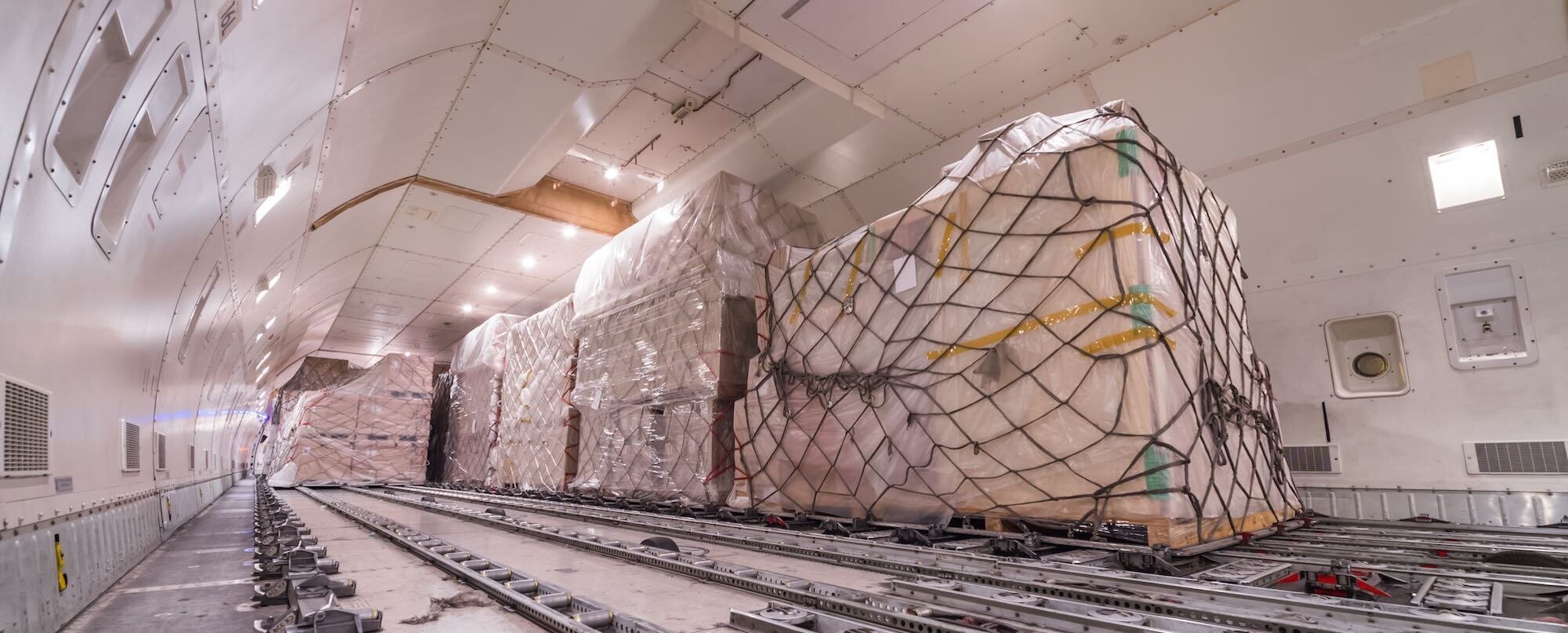
Piper PA-31
The twin-engine, turbocharged Piper PA-31 earns its keep on North American air cargo charter routes where rough weather, short strips, and tight schedules are the norm. Its wide rear doors and quick-release seating let charter crews swap rapidly between passenger, combi, medevac, or full-freight layouts, so a single aircraft can haul small-parcel spares into an Alaskan bush village in the morning and fly an emergency patient out that afternoon.
Operators prize the PA-31’s reliability, fuel-sipping turbocharged piston engines, and short-field performance—all critical when you’re landing on 3,000-foot gravel in northern Canada or hopping between Gulf of Mexico energy platforms. Its low operating cost keeps remote-destination charters economical on short- to medium-range legs, making it an ideal “first-in, first-out” lifeline for isolated communities and work sites.
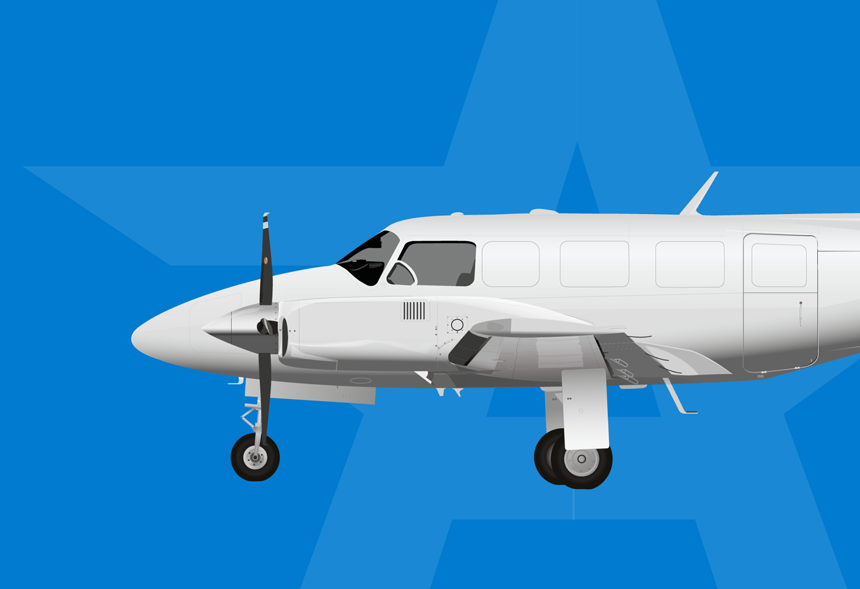
Cessna 406 Caravan II
Built for adaptability, the Cessna 406 Caravan II is a light twin-turboprop that excels on air cargo charters to underserved or off-grid locations. The pressurized cabin climbs comfortably to 30,000 ft—perfect for weather avoidance or long overwater stretches to coastal Alaska and Hawaii—yet converts in minutes to carry up to 3,085 lb (196 ft³) of freight.
A two-panel cargo door behind the wing speeds side-loading, while an optional belly pod swallows small crates or medical coolers. Most important for remote charters, the 406’s compact footprint and rugged gear let it operate from firm grass, gravel, or dirt, reaching mining camps, island airstrips, and desert drill pads where larger freighters can’t land. When a production line is down in a far-flung location, charter brokers often dispatch a Caravan II for a direct, line-down parts delivery—no hub transfers, no delays.
Pilatus PC-12
The Pilatus PC-12 is a single-engine turboprop beloved by charter operators for its mix of payload, range, and go-anywhere capability. Seats come out quickly, turning the executive cabin into a spacious cargo bay accessed by a full-size aft door—large enough for pallets, medical stretchers, or outsize tech equipment.
Robust trailing-link gear, high prop clearance, and ample power give the PC-12 exceptional short-field and unimproved-strip performance on gravel, grass, or dirt, making it a natural choice for charters into Arctic villages, Mexican pipeline sites, or Canadian wilderness outposts.
Because it burns less fuel than comparable twins yet cruises fast and high, the PC-12 keeps per-mile costs reasonable while delivering premium speed and flexibility. For charter customers who need a single aircraft that can land almost anywhere, haul critical cargo, and turn around fast, the PC-12 is the go-to platform for remote-destination success.
Embraer EMB-110 Bandeirante
The twin-turboprop Embraer EMB-110 Bandeirante is tailor-made for air cargo charters into remote destinations across North America. Its pressurized cabin, which normally seats up to 18, converts quickly to a flat-floor hold accessed by a generous left-side cargo door—ideal for pallets of spares, medical kits, or mail bound for isolated communities.
Operators value the EMB-110’s robust Pratt & Whitney engines, forgiving short-field handling, and proven reliability on rough, underdeveloped strips. Modular systems and simple construction keep maintenance straightforward, so the aircraft can stay in theater for days while shuttling between back-country airstrips, Arctic ice runways, or Caribbean island fields. For charter customers needing a cost-effective platform that lands where scheduled airlines can’t and turns rural logistics windows into hours, not days, the Bandeirante is a dependable first choice.
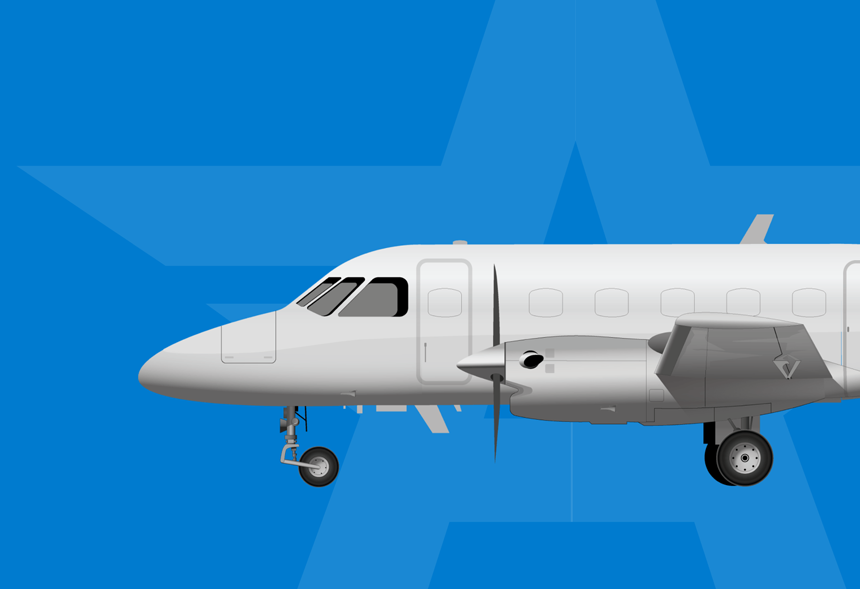
Shorts SD 360
Purpose-built for short-haul, low-capacity routes, the Shorts SD 360 shines on charter runs to airstrips with limited infrastructure. Its square-section fuselage creates an unusually roomy hold that cargo firms use for express freight, e-commerce parcels, and project supplies—up to 36 passengers or bulk loads when the seats come out.
A rugged airframe, powerful twin turboprops, and excellent short-field performance let the SD 360 tackle gravel, grass, or narrow paved runways that larger jets avoid. Charter brokers dispatch it to remote mining camps, FEMA staging hubs, and coastal villages where rapid lift is critical but payloads don’t justify a wide-body freighter.
Economical to operate and quick to load, the SD 360 bridges the “last-hundred-mile” gap, delivering essential freight direct from regional hubs to the world’s out-of-the-way corners without costly repositioning legs.
Antonov An‑26
The rugged Antonov An-26 is legendary among air cargo charter operators serving harsh, remote regions. Designed for austere operations, this twin-turboprop features a rear clamshell ramp that lets forklifts, pallets, and even light vehicles roll straight aboard—perfect for disaster-relief kits, construction machinery, or scientific equipment.
The An-26’s high-mounted wings, large propellers, and sturdy landing gear deliver superb short-field and high-altitude capability, enabling reliable performance on mountain strips, Arctic gravel, or tropical dirt runways in challenging wind and weather. Straightforward systems and field-repair-friendly construction mean crews can keep the aircraft mission-ready far from major maintenance bases.
When supply chains reach the end of the road—literally—charter clients count on the An-26 to haul outsized freight, critical aid, and industrial payloads directly into the toughest places on the map, completing missions few other freighters dare attempt.
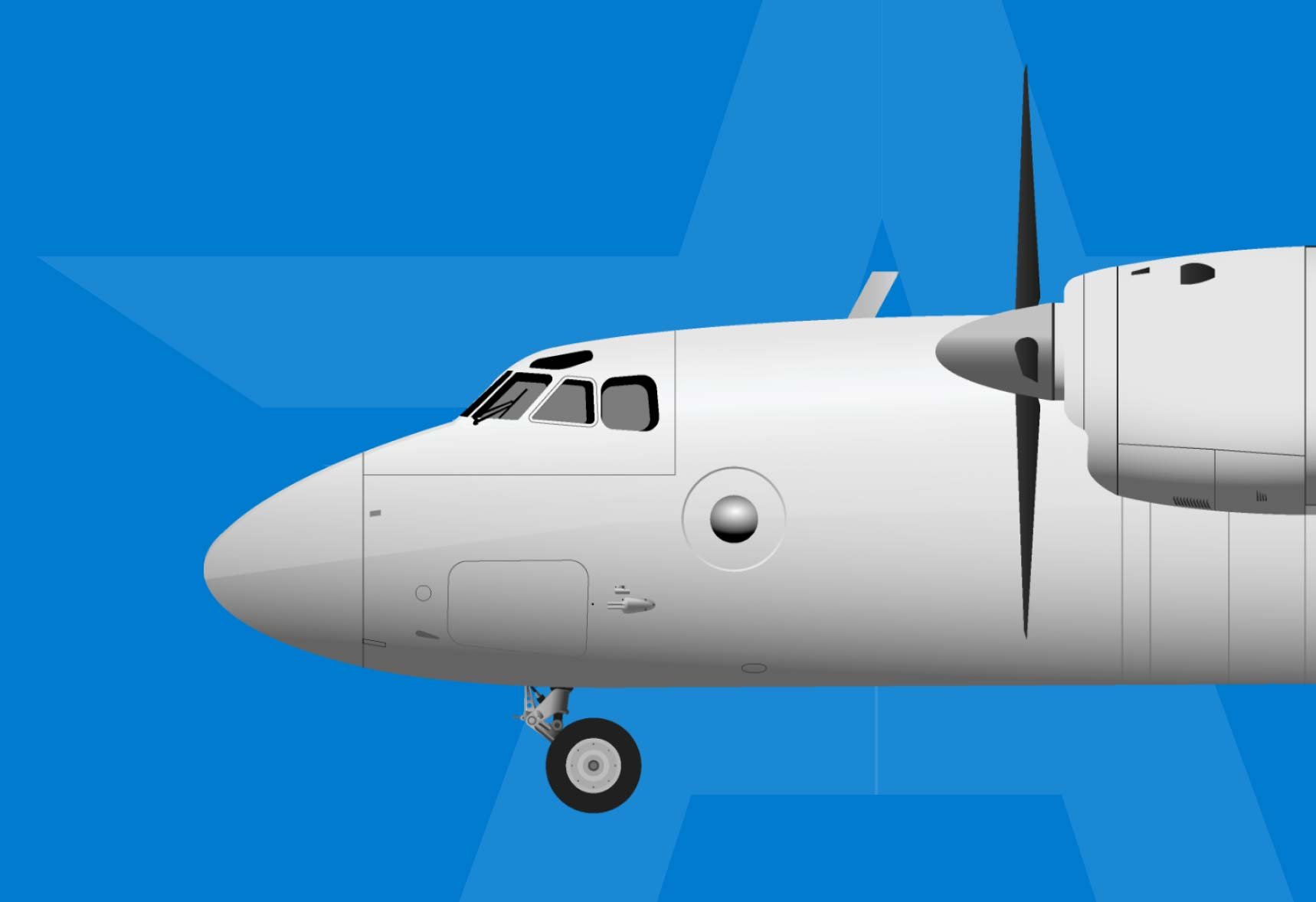
Convair CV-580
The twin-turboprop Convair CV-580 remains a favorite in North American air cargo charter fleets precisely because it thrives where scheduled service ends. Seating up to 50 in legacy airline trim, the CV-580 converts quickly into a full-freight layout loaded through a wide aft door—ideal for pallets, containers, and bulk supplies headed to resource camps, bush villages, or island communities.
Powerful Allison engines and a reinforced airframe deliver excellent short-field performance on paved, grass, gravel, or dirt strips—even at high-altitude. That lets charter brokers route direct from regional hubs to mountain mines in British Columbia, gravel runways along Alaska’s coast, or remote energy pads in Mexico’s interior without costly truck transfers.
Reliable systems, ample spares, and straightforward maintenance keep the Convair on station for days, making it a proven workhorse for time-critical freight into remote destinations that demand both payload and toughness.
Boeing 727-200F
The classic Boeing 727-200F combines jet speed with uncommon short-field capability, thanks to its distinctive trijet layout and high-lift flap system. Freighter conversions add a reinforced floor and large forward cargo door, enabling rapid loading of express freight, automotive parts, or oversized pallets.
For air cargo charter missions to remote or secondary airports, the 727’s ability to use shorter runways than comparable twin-jets is a game-changer—think oilfield bases in northern Alberta, relief hubs on Caribbean islands, or high-elevation strips in the Rockies. Charter operators value the aircraft’s 45,000-lb-plus payload, fast cruise, and plentiful spare-parts pipeline, ensuring quick dispatch even on short notice.
When wide-bodies are too big and turboprops are too slow, the 727-200F fills the gap—flying direct, on demand, to underserved destinations where keeping supply lines moving is mission-critical.
Boeing 737-400F
Stretched ten feet over the -300, the Boeing 737-400F offers higher payload and a wide main-deck cargo door while retaining the 737 family’s renowned operating economics. Medium-haul charter customers appreciate its balance of fuel efficiency, plentiful lift, and low upkeep—perfect for high-capacity charters to regional markets that lack wide-body infrastructure.
Crucially, the 737-400F can be outfitted with gravel-kit or unpaved-runway modifications, letting it operate from semi-prepared strips in Alaska, Canada’s far north, or Mexico’s resource corridors. Strong performance from brief paved runways also opens hundreds of secondary airports that cut surface-transfer time.
For shippers needing a fast jet solution that still reaches remote destinations off-limits to larger freighters, the 737-400F delivers reliable, point-to-point service—moving critical spares, e-commerce surges, or relief supplies with the speed and flexibility only an on-demand air cargo charter can provide.
Learn More About the Boeing 737‑400FAirFreight.com – Air Cargo Charter Solutions Across North America
When it comes to arranging air cargo charter services for remote destinations in North America, AirFreight.com specializes in providing end-to-end solutions. We understand that reaching places “off the grid” requires not just any charter, but the best charter jet service tailored to the mission.
Single Point of Contact
Coverage from Anywhere to Anywhere
24/7 Logistics Coordination
Expertise in Remote Logistics
Dedicated, Customer-Focused Approach
Frequently Asked Questions
What is an air cargo charter service?
An air cargo charter service provides a dedicated aircraft for freight, essentially a private cargo flight tailored to your shipment’s needs. Unlike scheduled air freight, which follows fixed routes and timetables, a charter lets shippers dictate the schedule and route, ensuring an unbroken chain of custody that regular carriers can’t guarantee. In short, it’s a bespoke freight solution where your goods fly on their own plane, going exactly where and when you require – a huge advantage for time-sensitive deliveries or hard-to-reach destinations
How does an air cargo charter work?
In an air cargo charter, an entire aircraft is reserved exclusively for your cargo. You or your logistics partner provide details like the cargo weight, dimensions, origin, destination, and timing. The charter provider then selects an appropriate aircraft and obtains any needed permits or clearances. On the day of the flight, your shipment is loaded and the plane flies directly to the destination (often with no stops except fuel). Because the flight is solely for your freight, there are no layovers for other cargo – the charter moves point-to-point on demand, giving you maximum control and speed. Essentially, it’s a “rent your own cargo plane” service, with the charter company handling the flight planning, crew, and logistics for a seamless delivery.
When should I use an air cargo charter instead of regular freight?
Use an air cargo charter when scheduled shipping options can’t meet your needs. Common scenarios include extremely urgent deliveries (e.g. to avoid a production line shutdown or Aircraft on Ground emergency), oversized or heavy cargo that won’t fit on normal flights, or remote destinations that scheduled airlines don’t serve. Basically, whenever a shipment “can’t wait” for normal transit, a charter is often the best or only solution. For example, if missing parts would idle a factory or if you need disaster relief supplies delivered immediately, a freight forwarder may recommend chartering a cargo plane to get the job done without delay.
What are the benefits of air cargo charter flights?
How fast can an air cargo charter be arranged for urgent needs?
Very quickly – often within hours. Most air cargo charter providers operate 24/7 specifically to handle emergencies. In critical “go now” situations, charter companies can identify an available aircraft and crew on short notice and have the plane airborne in just a couple of hours. For example, some urgent charter services note they can be wheels-up roughly two hours after confirmation of the booking. This rapid-response capability means if you have an after-hours or last-minute crisis, an air charter can be organized overnight, on weekends, or whenever needed. The exact lead time depends on aircraft availability and permits required, but the charter industry is built around speed – far faster than scheduling a new cargo shipment on commercial airlines. Always communicate the urgency when booking; reputable providers will have operations staff on-call 24/7 to launch an immediate flight for time-critical cargo.
Can I charter a cargo plane for emergency shipments or disaster relief?
Yes. Air cargo charters are a go-to solution for emergency response and disaster relief logistics. In fact, during crises, freighter charters often serve as vital lifelines, delivering aid with unparalleled speed and flexibility. Governments, NGOs, and companies regularly charter cargo aircraft to rush relief supplies (food, water, medical equipment, generators, etc.) into disaster zones when infrastructure is damaged or time is of the essence. Charter providers are experienced in these scenarios: they can operate on short notice, fly into secondary or improvised airstrips, and carry specialized cargo like relief tents or vehicles. For example, in a natural disaster, if roads and ports are unusable, a chartered cargo plane can airlift tons of aid directly to affected regions in hours. The charter company will also help coordinate urgent permits and routing to ensure the fastest possible delivery. In summary, when emergencies strike – from hurricanes and earthquakes to humanitarian crises – chartering a cargo plane is often the fastest way to get life-saving goods on site.
What is Aircraft on Ground (AOG) and how do air charters help?
“Aircraft on Ground (AOG)” means an aircraft is unexpectedly grounded due to a technical issue, awaiting a part or repair – and every minute it’s down costs the airline money. Charters play a critical role in resolving AOG situations by flying in needed parts or engineers as fast as possible. For example, if a jet is stuck waiting for a replacement component, an air cargo charter can immediately dispatch with that part, minimizing downtime. This speed is vital because AOG downtime is extremely costly – industry estimates show an airliner can lose $10,000 to $150,000 per hour it’s out of service. By using a chartered plane or even an onboard courier, the component can often be delivered within hours rather than days. Airlines frequently charter cargo aircraft to move large AOG items like engines or landing gear; for instance, flying a spare engine overnight to get a grounded aircraft back in the air. In short, an AOG charter is an emergency freight mission aimed at getting a grounded aircraft flying again ASAP, thereby saving the airline from prolonged revenue loss.
Can air cargo charters handle heavy lift and oversized cargo?
Absolutely. Handling outsize, heavy cargo is a specialty of many air charter services. Charter operators can source specialized freighter aircraft equipped for large and heavy loads – for example, the nose-loading Antonov An-124 or Ilyushin IL-76, and jumbo freighters like the Boeing 747-400F. These aircraft can accommodate payloads far beyond the limits of standard cargo planes (the An-124 can carry up to about 120 tons of cargo). As a result, charters excel at moving machinery, industrial equipment, vehicles, and other oversized freight in one piece, without needing to disassemble it for shipping. For instance, if you have a 60-ton generator or an oversized oil drilling component, a charter can load it intact (using cranes or ramps) and fly it directly to the project site. Regular scheduled flights, by contrast, often cannot even fit such cargo through their doors. In summary, heavy-lift air charters are ideal for outsized consignments – they provide the capacity, proper loading infrastructure, and direct routing to transport massive items quickly and safely.
How are dangerous goods or hazardous materials handled on cargo charters?
Air cargo charters can transport dangerous goods (hazmat) that commercial services often won’t touch, but it’s done under strict regulations. Reputable charter providers have teams trained in IATA Dangerous Goods Regulations and ICAO standards to ensure safe handling. They will source aircraft licensed for hazmat cargo and assist with the required documentation (e.g. Dangerous Goods Declarations) and permits. The advantage of a charter is that your hazardous shipment isn’t near other cargo or passengers, reducing risks – it’s the only cargo on the plane, with a crew that’s aware of the materials. Whether it’s flammable liquids, corrosives, batteries, radioactive or explosive materials, etc., charter specialists coordinate proper packaging, labeling, and loading procedures. In fact, charter experts regularly move hazmat cargo that standard airlines refuse (e.g. certain explosives or chemicals) by ensuring all safety protocols are met. They often even arrange ground handling and storage at origin/destination to maintain compliance. Bottom line: you can ship dangerous goods via charter, but expect careful planning – and always disclose the exact nature of the cargo so the charter operator can take the necessary precautions and obtain any needed clearances.
How do air cargo charters serve remote locations (like Alaska or rural areas)?
Charters are often the only way to reach remote or hard-to-access locations quickly. Cargo charter flights can use smaller airports and even dirt airstrips that big scheduled planes can’t, bringing goods directly into isolated areas. For example, in Alaska’s rural villages or Canada’s far north, communities rely on chartered bush planes and cargo aircraft to deliver supplies because there may be no roads or regular service. An air charter can take off from a major hub and land on a small regional runway or even a gravel strip, delivering shipments closer to their final destination and avoiding delays at major airports. This is crucial for remote mining sites, oil fields, logging camps, or islands like those in the Caribbean or Pacific. In Alaska, a charter might fly construction materials to a village that’s otherwise reachable only by barge (which could take weeks). In the U.S. mainland, if you need to get equipment to a rural construction project with no scheduled flights nearby, a charter can fly directly to the nearest airfield. Simply put, air cargo charters provide a lifeline to remote regions, ensuring that essential cargo – food, medical supplies, machinery, etc. – arrives swiftly where overland routes are impractical or nonexistent.






